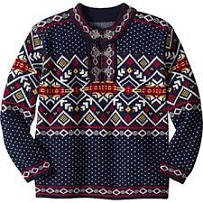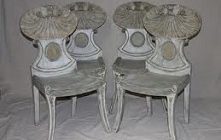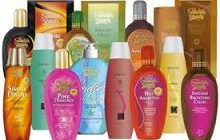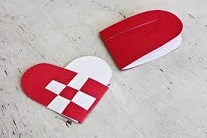Swedish sweaters date back to traditional Nordic knitting patterns used in gloves, mittens, socks, sweaters and blankets, portraying vivid patterns and attractive designs. Read our guide for more facts and information…
Sweaters in earlier days were basically made from wool, though cotton, synthetic fiber and other combinations are used now. As a versatile clothing item, sweaters suit any outfit and are preferably worn with a dress underneath so that they can be taken off when it is warmer. Nordic-inspired Swedish sweaters coupled with the Scandinavian heritage come in tightly knit combed cotton yarns, blended with wool to allow comfortable warmth during winters. With extremely cold winters, and cool autumns and springs, Swedish interiors are kept sufficiently warm so that sweaters and pullovers are meant mostly for outdoors.
Fabrics used in Swedish sweaters
In Sweden, sweaters are made of wool, cotton, man-made fibers such as synthetic staple fibers, and textile materials like flax, silk or ramie. Swedish markets also offer sweaters made from acrylic and viscose fibers. Machine knitted sweaters have a commercial market, while hand-knitted sweaters are meant for personal and family use. Knitting yarn is manufactured separately for machine-knit and hand-knit sweaters.
Origin of Swedish sweaters
The origin of cardigan sweater goes back to the Crimean War period of 1800’s, when James Thomas Brudenell, the seventh Earl of Cardigan, popularized the cardigan sweater culture, which is named after him. The Swedish Ullared sweater of the same period is still popular for its dotted diamond motif pattern. Originally, Nordic-inspired sweaters used the natural sheep wool colors, namely black and white. ‘V’-shaped patterns known as ‘lice’ were the most popular pattern in those days and sweaters were usually worn by tucking them down into pants. Eventually, intricate patterns with brighter colors came up, with decorative silver clasps. Apart from geometric motif patterns, thematic ones like reindeer and other nature-oriented patterns also became popular.
Varying styles of Swedish sweaters
Over the years, traditional knitting patterns used in Swedish sweaters have undergone changes in tandem with the trend in fashion, introducing a variety of styles. Pullovers, zip-neck sweaters, front-open cardigans, close-neck sweaters and many others come with reinforced shoulders for lasting wear. Thin sweaters made of cotton, silk or wool form natural indoor garments almost throughout the year. Women’s sweaters come belted or with a drawstring knitted in the sweater. Sweater dresses are common as kids wear imparting the necessary warmth for infants and young children.
Swedish knitting techniques are cherished for their traditional origin along with arts and craft, and are passed through generations as family members are also proud to learn their heritage. Swedish sweaters are popular worldwide as new and dressy designs adore the traditional sweaters, keeping up with the current fashion.





